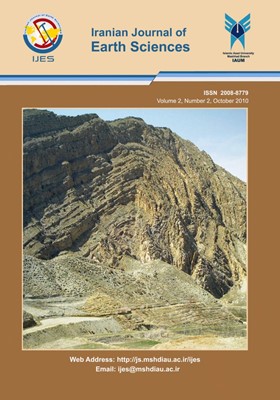A Seismic Factor of Radon Danger on a Case Study of Armenia
محورهای موضوعی : MineralogyE. Saghatelyan 1 , A. Saghatelyan 2 , A. Petrosyan 3 , H. Asmaryan 4
1 - Center for Ecological-Noosphere studies of NAS RA, Abovyan 68, 025, Yerevan, Armenia
2 - Center for Ecological-Noosphere studies of NAS RA, Abovyan 68, 025, Yerevan, Armenia
3 - Center for Ecological-Noosphere studies of NAS RA, Abovyan 68, 025, Yerevan, Armenia
4 - Center for Ecological-Noosphere studies of NAS RA, Abovyan 68, 025, Yerevan, Armenia
کلید واژه: cancer, Armenia, Radon danger, Seismic activity, earthquakes,
چکیده مقاله :
For the first time, on the basis of Spitak earthquake experience (Armenia, December 1988), it was found that an earthquake causes intensive and prolonged radon releases that are quickly dispersed in the open air and that is why they are not usually registered but contrastingly displayed in covered premises (such as dwelling houses, schools, kindergartens) even if they are at a considerable distance from the epicenter of the earthquake. The duration of the release includes the period starting from the first foreshock and ending with the last aftershock, i.e. several months. The radiation intensity and duration of the influence are in direct correlation with the intensity of the earthquake. The area affected by radiation is larger than the territory of Armenia. The scale of this impact on the effected population is twelve times higher than the number of people injured in the Spitak earthquake. Data collation from the 2000–2005 time period indicates that a contrasting increase in indoor radon concentrations in Yerevan (several times excessive vs. the sanitary norm) is predetermined not only by strong earthquakes (M ≥ 4.5), but also by the weak (M <4.5), small-depth (H-5-15km), regional (R ≤ 200 km from Yerevan) earthquakes and earthquake swarms occurring in the territory of Armenia, as well as in Iran and Turkey.
For the first time, on the basis of Spitak earthquake experience (Armenia, December 1988), it was found that an earthquake causes intensive and prolonged radon releases that are quickly dispersed in the open air and that is why they are not usually registered but contrastingly displayed in covered premises (such as dwelling houses, schools, kindergartens) even if they are at a considerable distance from the epicenter of the earthquake. The duration of the release includes the period starting from the first foreshock and ending with the last aftershock, i.e. several months. The radiation intensity and duration of the influence are in direct correlation with the intensity of the earthquake. The area affected by radiation is larger than the territory of Armenia. The scale of this impact on the effected population is twelve times higher than the number of people injured in the Spitak earthquake. Data collation from the 2000–2005 time period indicates that a contrasting increase in indoor radon concentrations in Yerevan (several times excessive vs. the sanitary norm) is predetermined not only by strong earthquakes (M ≥ 4.5), but also by the weak (M <4.5), small-depth (H-5-15km), regional (R ≤ 200 km from Yerevan) earthquakes and earthquake swarms occurring in the territory of Armenia, as well as in Iran and Turkey.


